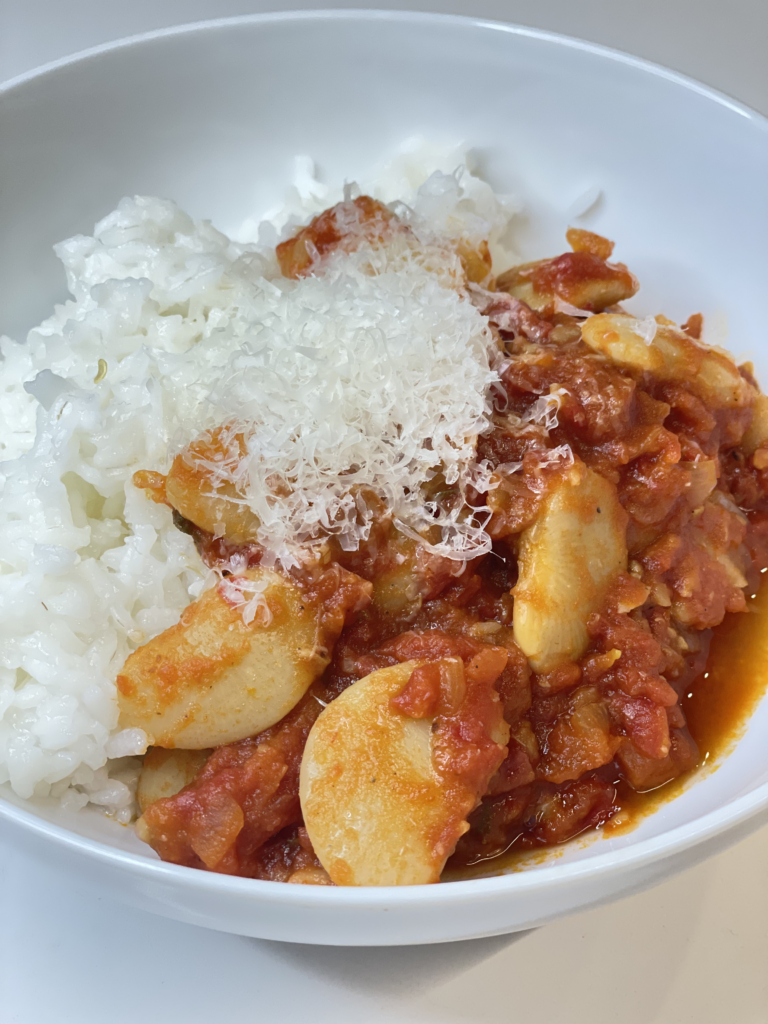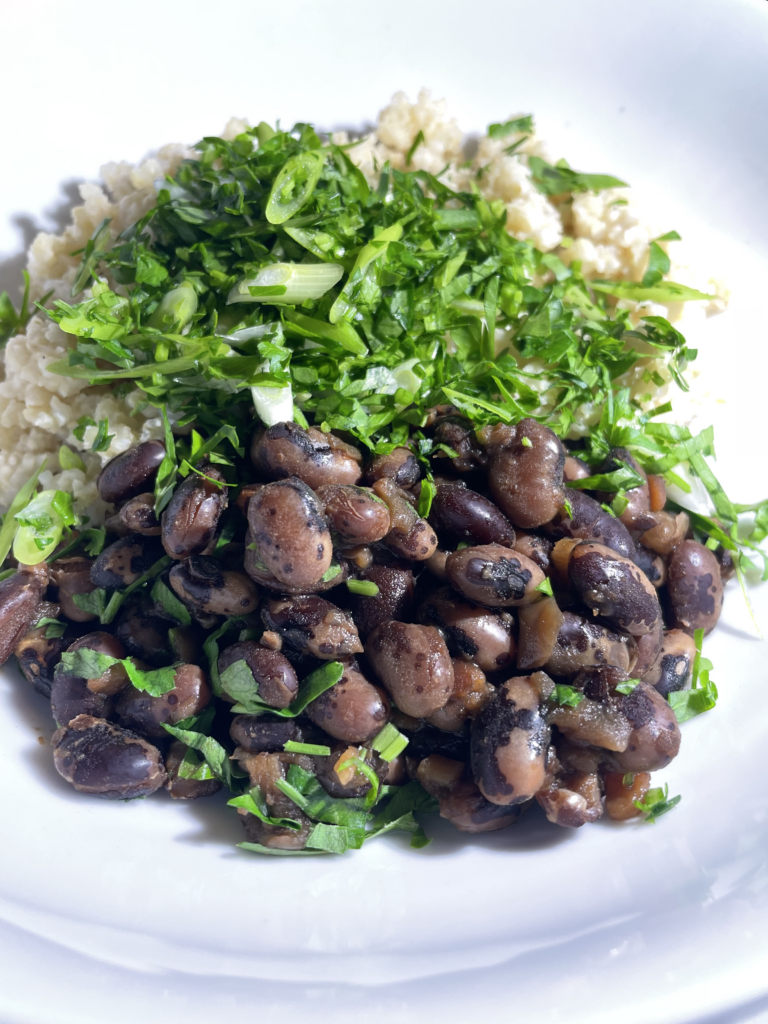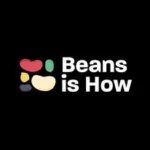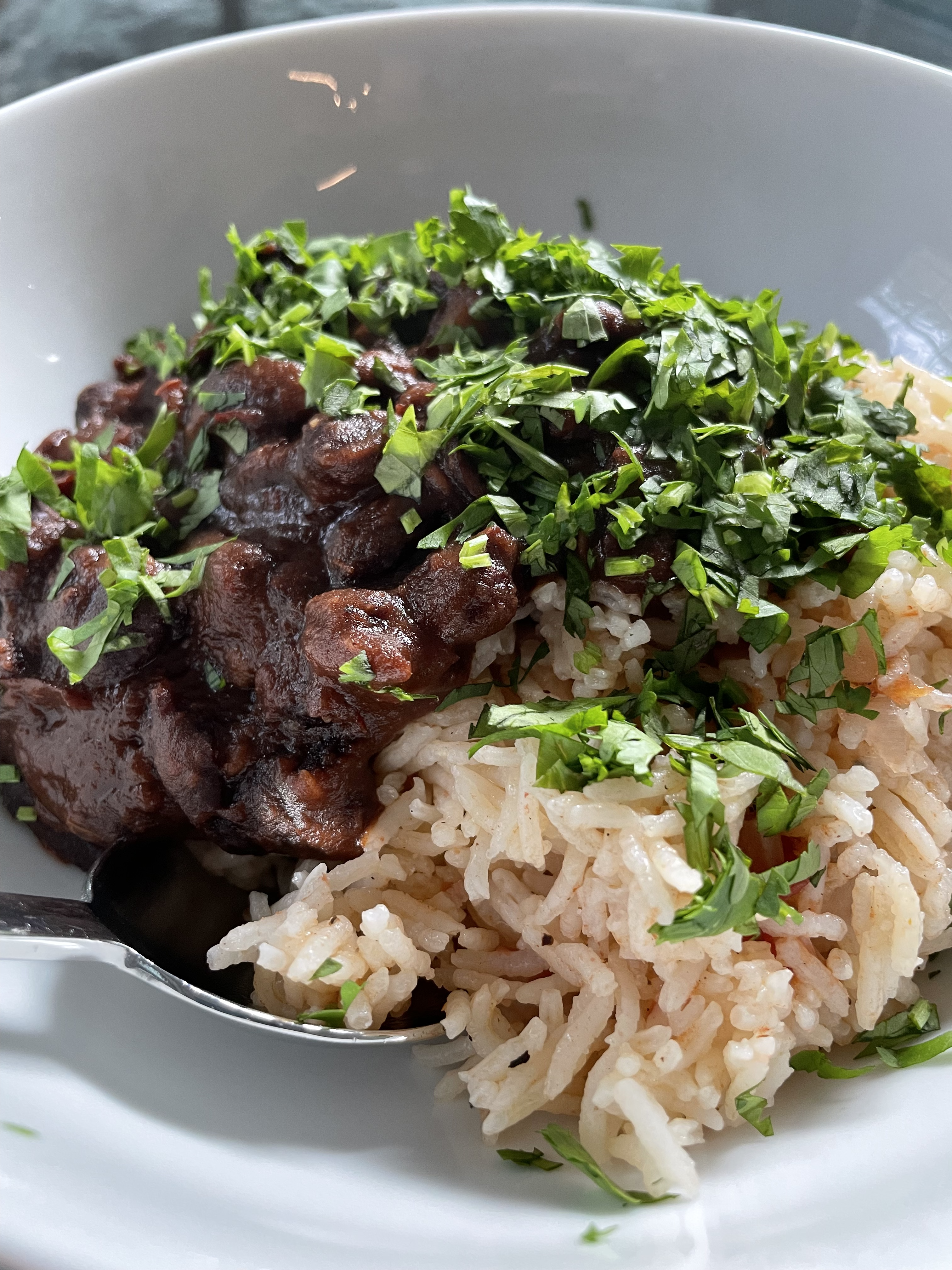
We hear the words “beans,” “legumes,” and “pulses” interchangeably – what’s the difference??
-
Legumes are a family of plants that bear several seeds in a pod and can be eaten as a vegetable before they are often dried. Legumes belong to the third largest family among flowering plants (after orchid and daisy families), and the second most important to the human diet after grasses (grains).
-
Pulses are the edible seed from the legume plant. Examples are lentils, broad beans, peas, chickpeas, soy, mung, lima, navy, kidney, black, pinto and many, many others.
-
Dried beans are just one type of pulse. All beans are legumes, but not all legumes are beans.
(Image: Beans in Dry Chilies with Chocolate)
Why should you care?
Beans may not be a fruit, but they are classified as both a vegetable and plant-based protein in the US dietary guidelines, which recommends consuming at least three cups of beans a week (roughly ½ a cup a day).
When you wonder how you might be able to contribute in some small way to the overall health of yourself and the planet, eating beans is a great way to start. Legumes and pulses enrich the soil they are grown in and have a unique relationship with certain soil bacteria which can supply essential nitrogen compounds and enrich soil health.
Chef Tom Hunt speaks passionately about beans in his book, Eating for Pleasure, People, & Planet:
“As I’m sure you know by now, I’m a lover of legumes, grains and pseudo-cereals (millet, sorghum, for example) for all the nutrients they provide us and the soil. Exploring edible seed biodiversity is joyous, fascinating, and delicious… Cooking your own beans, legumes, and grains from scratch is one of the most easy, rewarding, cost effective, nutritious things you can do for your diet… Legumes are nitrogen fixing and help to improve soil fertility. They require less water and fertilizer to grow than other proteins and can make you feel full and lose weight, as well as reducing bad cholesterol.”
Harold McGee devoted over 50 pages to beans in his book On Food and Cooking, The Science and Lore of the Kitchen.
In brief, this extensive chapter speaks to the importance of consuming grains and beans in the life of humans:
“Beans are a concentrated source of protein and can be easily stored for long periods of time. They have played a crucial role in human nutrition and cultural evolution for almost 10,000 years and were some of the first propagated food crops that were brought under human control. Beans provide much of the caloric intake for some middle eastern and east Asian cultures – in some instances 2-3 times the average than the developed west. Cereals and legumes when combined can account for more than two thirds the world’s dietary protein.”
My registered dietitian friend, Raeanne Sarazen MA, RDN, author of The Complete Recipe Writing Guide: Mastering Recipe Development, Writing, Testing, Nutrition Analysis and Food Stylinghas this to say about consuming beans says:
“A simple technique to make your recipes healthier is to add more legumes (beans, peas, and lentils). Beans are great for your health, supporting gut health and helping in the prevention or management of conditions like obesity, heart disease, and type 2 diabetes. Additionally, they’re packed with protein, fibre, B vitamins, iron, potassium, magnesium, zinc, and folate. Canned beans are a convenient option, and already cooked—and just as nutritious as dried versions.”
The Fanny Farmer Cookbook by Marion Cunningham, speaks to dried beans passionately:
“They are splendid in casseroles, robust and satisfying in soups and salads, and, on a hike a cold bean sandwich has no peers.”
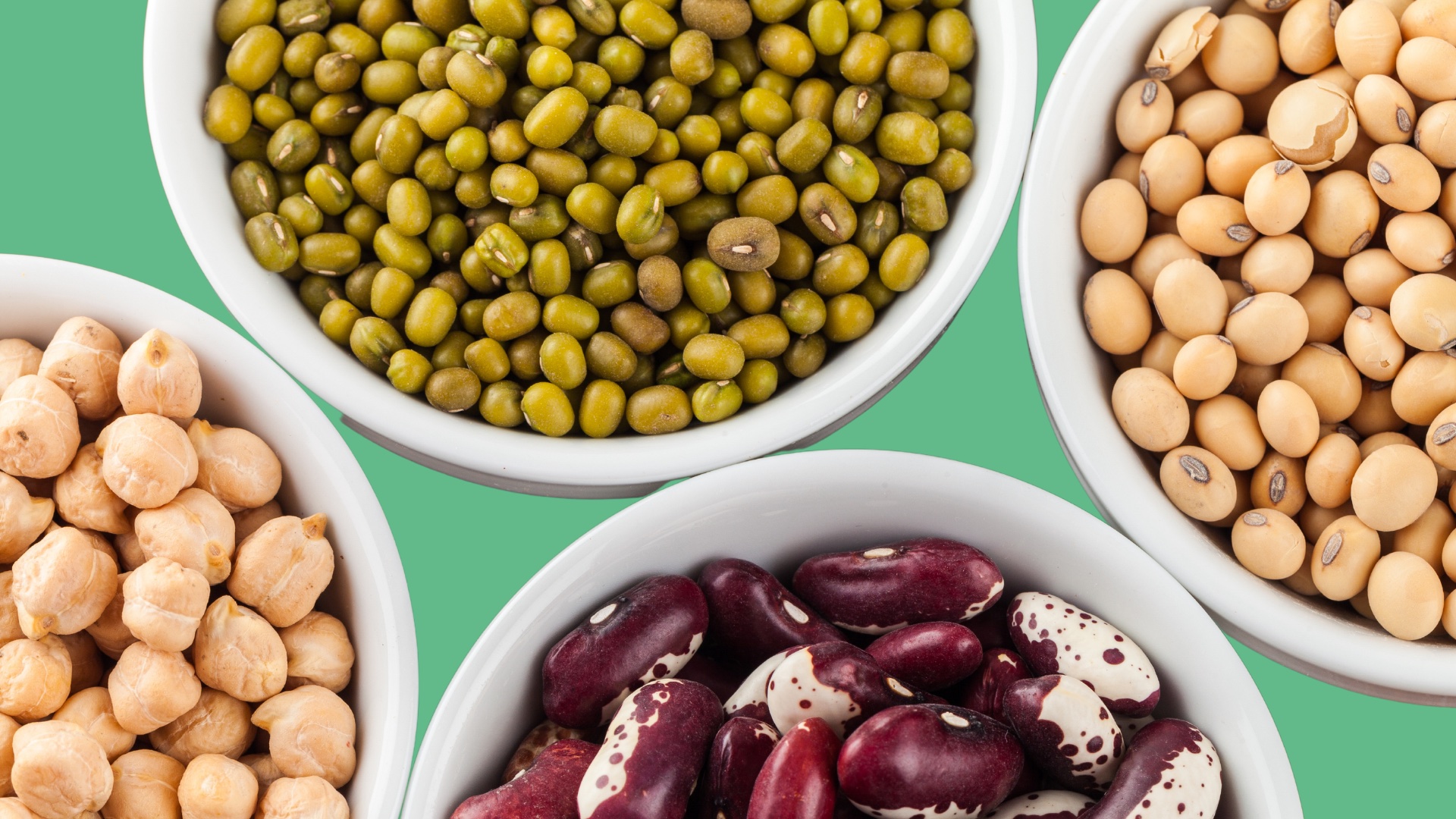
There are several organizations that help support messaging on the benefits of eating more beans:
-
“Beans is How” has a great website offering all sorts of “bean-information” from recipes, to great facts about beans and offers an opportunity to join their newsletter.
-
One that I love and am engaged with is The Chefs’ Manifesto (a project of the SDG2 Advocacy Hub), which is a chef-led project that brings together 1500+ chefs from around the world to explore how they can help deliver a sustainable food system.
-
Additionally, the US Dry Bean Council’s website is a great resource “providing information to consumers, health professionals, buyers, suppliers and the media around the world about the good taste, nutritional value and versatility of beans.”
If you’ve never cooked beans before, you no doubt have questions on how to prepare them as part of a balanced meal.It can seem complicated – I assure you, it’s easy, and the following recipes are inspired by global cuisines with ingredients that are available in most big supermarkets.
There are MANY cookbooks on how to prepare and cook beans, and there are several culturally specific methods that result in deep rooted traditional flavors and textures of bean dishes. One such method uses red beans, cooked long and slow with sugar to create a sweet paste that’s used in pastries. Worth a visit if you have time and will open your palate to the whole world of beans as a sweet dish (and maybe inspiration for a follow-up article).
(Image: Miso-Molasses-Braised-Beans)

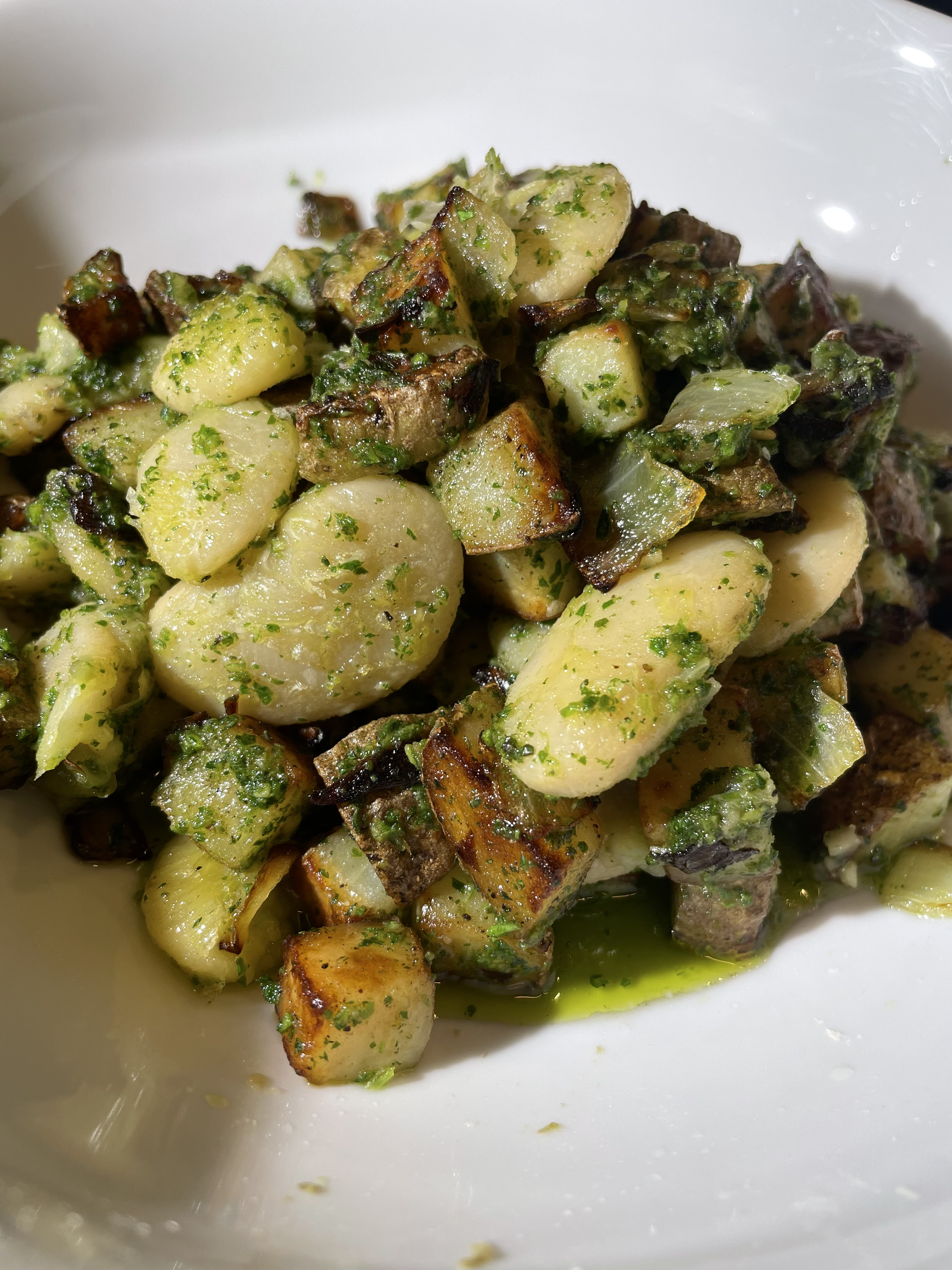
There are cooking methods that include soaking beans overnight, a two-step cooking method where beans are boiled first and then cooked slowly, and, a very slow-all-day-cook preparation. As I began walking down the path of discovering bean cookery on my own, I wanted to be able to prepare them with as little fuss and time as possible with maximum flavor and appeal. All the time-consuming recipes I tried in my recent experience were good, but I wanted something fast, flavorful, and easily repeatable that could be ready to eat in about an hour and created a crave-able meal. After several attempts at alternate methods, I discovered my pressure cooker, with a twist, was a super convenient way to create delicious results.
(Image: Gigante-Beans-in-Winter-Herbs-over-Sauteed-Potatoes)
I create two “chambers” in my pressure cooker where the beans are cooked separately from aromatics. This method took a few attempts to get right, and I will admit when I landed it with superior results, I was initially skeptical so tried it several more times to ensure it wasn’t a fluke. Basically, I use the trivet that came with my pressure cooker to support an oven-proof bowl that contains an assortment of aromatics. I add beans and water in a one-to-three ratio, some salt, and a pinch of baking soda (sodium bicarbonate) to the bottom of the pressure cooker. I then add the oven-proof bowl, filled with the aromatics, supported on the trivet, and then pressure cook the beans and this bowl-of-flavor together until the beans are tender and the aromatics have become softened and full of flavor, about an hour. I then carefully remove the hot bowl-of-flavor and puree the mixture, drain off some of the bean cooking liquid, and stir the puree into the beans. In about an hour, I’ll have a fully flavored pot of beans that’s almost foolproof. I’ve no doubt you could experiment with a wide host of ingredients to add to the bowl-of-flavor and create your own signature dish.
So, if you ask me, beans ARE the magical fruit – in more ways than one, just like the nursery rhyme implies.
(Image: Beans-in-Dry-Chilies-with-Choclate-and-Chicory-Salad-in-Roasted-Beet-Vinaigrette)
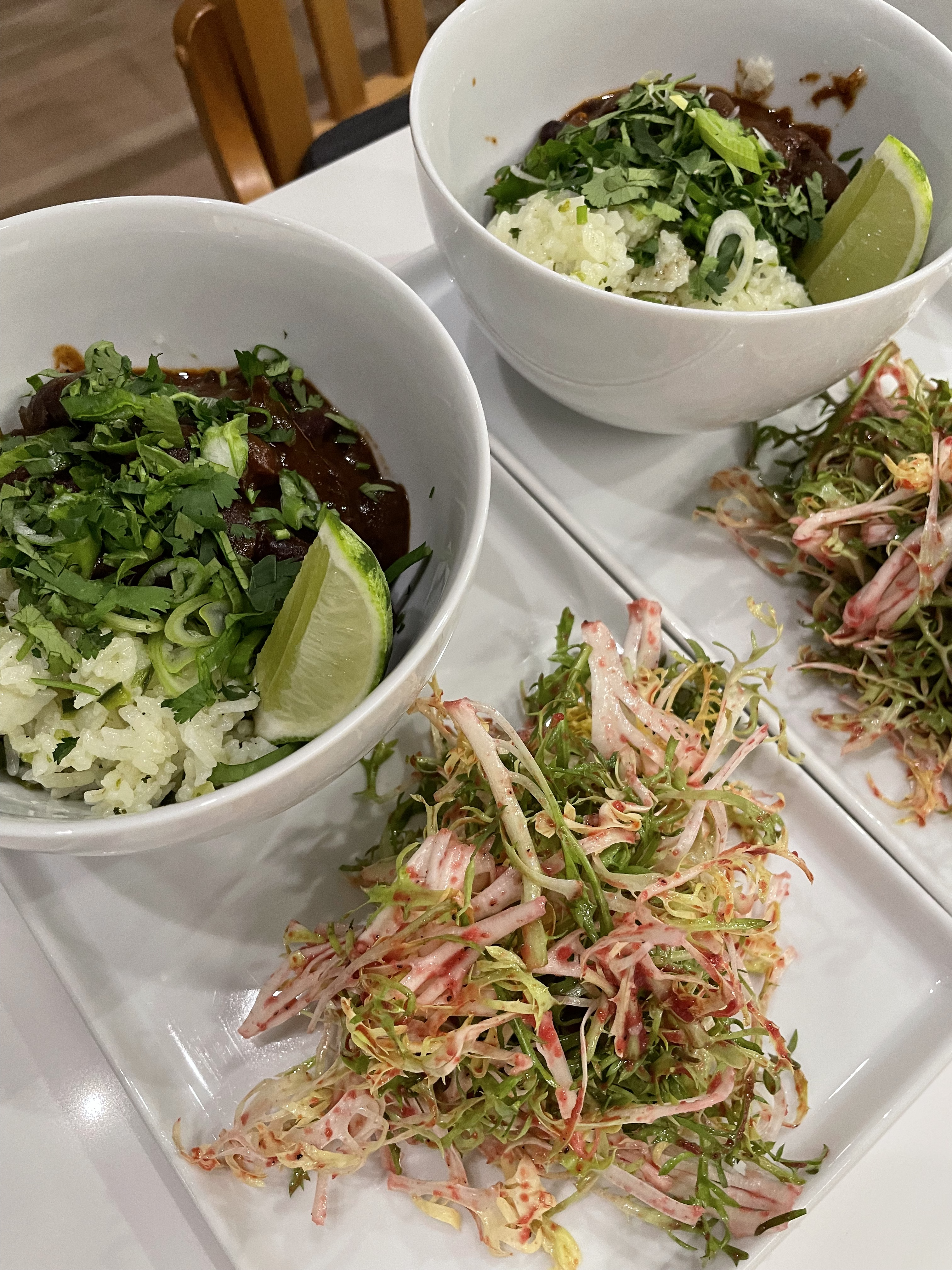

Mark attended Columbia University in the City of New York, and The Culinary Institute of America, Hyde Park, NY.
His career highlights include: Chef/Owner the Winking Sow, New York, NY; Managing Partner, Bois d’arc, Red Hook, NY; Executive Chef for local television and radio station NBC Chicago, IL; Executive Chef at the Walnut Room in Marshall Field’s State Street Chicago, IL; Syndicated Food Writer, Test Kitchen Chef and Lead Food Stylist, Good Eating section of the Chicago Tribune Chicago, IL; Chef Instructor at Sur la Table, the Chopping Block, and Saucee & Savoree, Chicago, IL; Senior Corporate Chef at National Starch Food InnovationBridgewater, NJ; Product Development Manager at Starbucks Coffee Company Seattle, WA; featured speaker at the January 2009 conference, World of Healthy Flavors, at the Greystone campus of the Culinary Institute of America Napa, CA; Corporate Executive Chef at Basic American Foods Walnut Creek, CA; Corporate Executive Chef at New Seasons Market Portland, OR; Global Director of Culinary, Kellogg Corporation Battle Creek, MI/Chicago, IL; Managing Partner at New Food Studio Chicago, IL,.
Instagram: @newfoodstudio. Mark sits on the advisory board of Stellar Menus and Grow It Yourself, Ireland, as well as a member of the Chefs’ Manifesto, a division of the United Nation’s Sustainable Development Goals.

